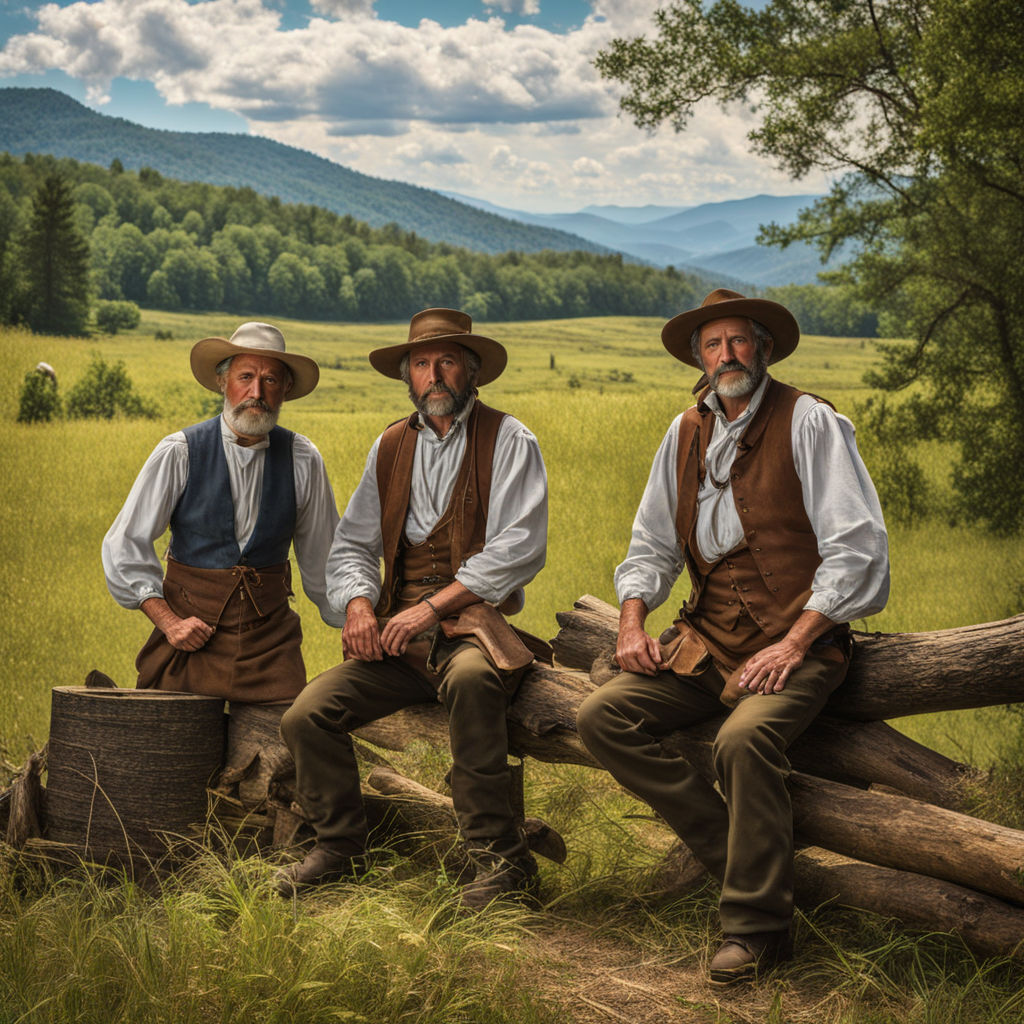
Cades Coves Settlers
Title: The Pioneers of Cades Cove: A Journey into the Heart of the Great Smoky Mountains
In the Great Smoky Mountains lies a valley steeped in history and natural beauty: Cades Cove. This secluded basin, now a focal point of the Great Smoky Mountains National Park, was once the homeland of the Cherokee. However, it gained prominence in American history with the arrival of European settlers in the early 19th century. Their legacy, etched into the landscape and preserved in the annals of time, offers a fascinating glimpse into the early pioneer life.
The Cherokee Beginnings and the European Settlers
Before delving into the lives of the European settlers, it is crucial to acknowledge the original inhabitants of Cades Cove, the Cherokee. This indigenous group called the area “Tsiya’hi,” meaning “Otter Place” in their language. The Cherokee utilized the cove for hunting and fishing but had no permanent settlements there, which later influenced the land’s availability to the European settlers.
The first European settlers arrived in Cades Cove in the early 1800s. These pioneers, predominantly of Scotch-Irish descent, were drawn by the promise of fertile land and the isolation that the cove offered. Among these early settlers were names that would become synonymous with the cove’s history: John and Lucretia Oliver, William “Fighting Billy” Tipton, and Peter Cable.
John and Lucretia Oliver: The First Permanent Settlers
John and Lucretia Oliver, who arrived in 1818, hold the distinction of being the first permanent European settlers in the cove. Their journey, fraught with the challenges of untamed wilderness and isolation, is a testament to the resilience and fortitude of the early American pioneers. The Olivers initially survived through the generosity of the Cherokee and soon established a homestead that would stand the test of time. Their cabin, a symbol of pioneer spirit, still stands today, offering visitors a tangible connection to the past.
The Community and Its Growth
The community in Cades Cove grew as more settlers arrived, drawn by the lush valleys and the relative peace the area offered. By the 1850s, the population peaked at around 685 individuals, marking the cove as a thriving, self-sufficient community. The settlers engaged in farming, with corn being the primary crop, alongside wheat, flax, and the raising of livestock.
Peter Cable: The Innovator
Among the notable settlers was Peter Cable, an engineer by trade, who arrived in the 1820s. Cable’s ingenuity was instrumental in the development of the cove. He designed a complex system of ditches and sluices that effectively drained the swampy land, making it more suitable for agriculture. His contributions significantly boosted the agricultural productivity of the cove.
Religion and Education
The settlers placed great importance on religion and education. The Cades Cove Methodist Church, established in 1827, and the Primitive Baptist Church, established in 1829, served as vital centers for spiritual life and community gatherings. Education, though rudimentary, was valued, and small log schoolhouses dotted the landscape, symbolizing the community’s commitment to learning.
The Civil War and Its Impact
The Civil War brought division and hardship to the residents of Cades Cove. The community, like many in East Tennessee, was divided in its loyalties, leading to internal strife and isolation. The aftermath of the war saw a shift in the cove’s dynamics, with some families leaving and new ones arriving.
Preservation and Legacy
The establishment of the Great Smoky Mountains National Park in the 1930s marked the end of an era for the Cades Cove community. While this led to the displacement of the last residents, it also ensured the preservation of this unique historical landscape. Today, visitors to Cades Cove can explore the well-preserved cabins, churches, and mills, a testament to the enduring legacy of the original settlers.
In conclusion, the story of Cades Cove is a tapestry woven with the threads of hardship, resilience, and community. The pioneers who settled in this secluded valley left an indelible mark on the landscape and history of the Great Smoky Mountains. Their legacy, preserved within the national park, continues to captivate and educate, offering a window into a bygone era of American history.